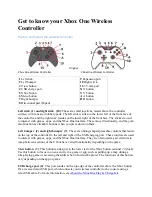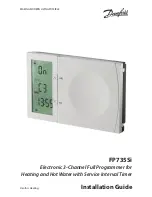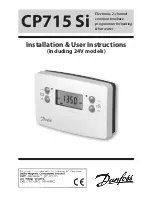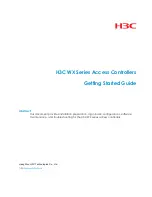
8-22
L90 LINE CURRENT DIFFERENTIAL SYSTEM – INSTRUCTION MANUAL
SERIES COMPENSATED LINES
CHAPTER 8: APPLICATION OF SETTINGS
8
Figure 8-7: Sample series-compensated system
Assuming 20% security margin, the underreaching zone is set as follows.
At the Sending Bus, consider an external fault at F1 because the 5
Ω
capacitor contributes to the overreaching effect. Any
fault behind F1 is less severe as extra inductive line impedance increases the apparent impedance:
Reach Setting: 0.8 x (10 – 3 – 5) = 1.6
Ω
if the line-side (B) VTs are used
Reach Setting: 0.8 x (10 – 4 – 3 – 5) = –1.6
Ω
if the bus-side (A) VTs are used
The negative value means that an underreaching zone cannot be used as the circuit between the potential source of the
relay and an external fault for which the relay must not pick-up, is overcompensated, for example capacitive.
At the Receiving Bus, consider a fault at F2:
Reach Setting: 0.8 x (10 – 4 – 2) = 3.2
Ω
if the line-side (B) VTs are used
Reach Setting: 0.8 x (10 – 4 – 3 – 2) = 0.8
Ω
if the bus-side (A) VTs are used
Practically, however, to cope with the effect of sub-synchronous oscillations, one can need to reduce the reach even more.
As the characteristics of sub-synchronous oscillations are in complex relations with fault and system parameters, no solid
setting recommendations are given with respect to extra security margin for sub-synchronous oscillations. It is strongly
recommended to use a power system simulator to verify the reach settings or to use an adaptive L90 feature for dynamic
reach control.
If the adaptive reach control feature is used, set the
PHS DIST Z1 VOLT LEVEL
setting accordingly.
This setting is a sum of the overvoltage protection levels for all the series capacitors located between the relay potential
source and the far-end busbar, or location for which the zone must not overreach. The setting is entered in pu of the phase
VT nominal voltage (RMS, not peak value).
If a minimum fault current level (phase current) is causing a voltage drop across a given capacitor that prompts its air gap
to flash over or its MOV to carry practically all the current, then the series capacitor is excluded from the calculations (the
capacitor is immediately by-passed by its overvoltage protection system and does not cause any overreach problems).
If a minimum fault current does not guarantee an immediate capacitor by-pass, then the capacitor must be included in
the calculation: its overvoltage protection level, either air gap flash-over voltage or MOV knee-point voltage, is used (RMS,
not peak value).
Assuming none of the series capacitors in the sample system is guaranteed to get by-passed, the following calculations
apply.
For the Sending Bus:
0.5 + 0.7 = 1.2 pu if the line-side (B) VTs are used
0.6 + 0.5 + 0.7 = 1.8 pu if the bus-side (A) VTs are used
For the Receiving Bus:
0.6 + 0.5 = 1.1 pu if the line-side (B) VTs are used
0.6 + 0.5 + 0.5 = 1.6 pu if the bus-side (A) VTs are used
















































